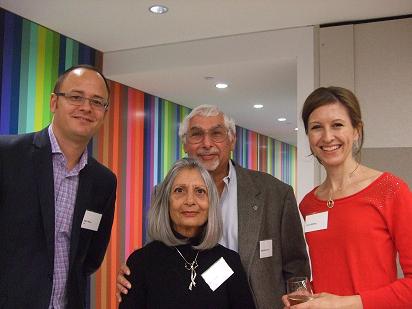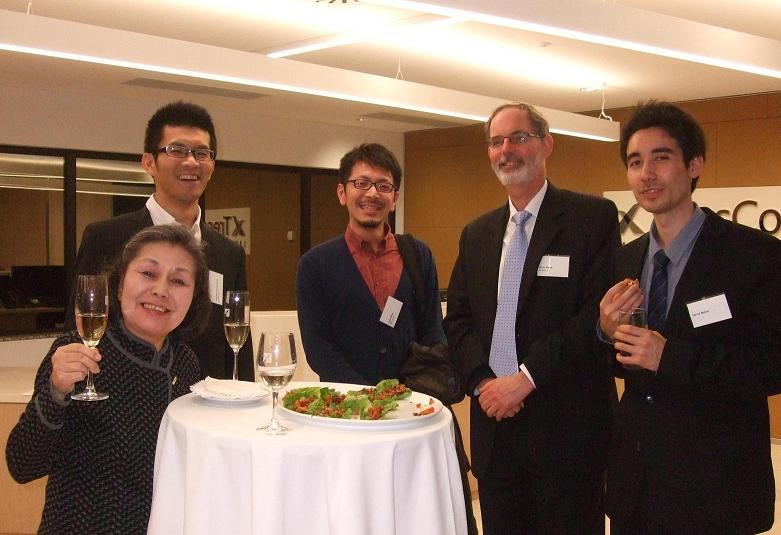Reports from recent AJS-NSW Events
Events 2013
'Fukushima': A correspondent's notebook - Mark Willacy, ABC North Asia correspondent
Reporter: Anna Watanabe (Anna is a Communications and Media student at UTS and one of the 2013 AJS University awardees)
At 2:46 pm on March 11, 2011, Mark Willacy felt something. But it wasn’t the force of a magnitude nine earthquake, moving a 10,000 kilometre-square piece of earth. It was the rush of wielding a brand new, handmade Japanese sword, surrounded by samurai lookalikes in Fukuoka prefecture in southern Japan. “You don’t need to be a journalist to know that this is the story of your life, and here I wasn’t even in the game,” Willacy said.
Three days after the tsunami swept up to 10 kilometres inland in parts of Tohoku, Willacy arrived in Rikuzentakata in Iwate prefecture. In an excerpt from his book, which he read to the Australia Japan Society, Willacy compares the scene to the morning after a party with giants. “Dozens of massive green tanks from the town’s sake brewery were strewn across the wasteland. It looked like some giant had had a party and the tanks were beer cans that had been emptied, crumpled and tossed aside.” But as the book’s title suggests, Willacy’s real focus was the disaster at the Fukushima Daiichi Nuclear Power Plant. Unlike the death, destruction and desolation caused by the tsunami, these events were not unexpected. As the reporter explains, TEPCO (Tokyo Electric Power) was aware of the tsunami risks facing the Fukushima plant. In 2008 the plant owner created a simulation which predicted a 15-metre high tsunami could hit the Fukushima plant, and that the wave could cause power outages to all reactors. But this information was shelved for three years, only to be made public to the regulators four days before the deadly tsunami hit.According to Willacy’s sources, the reason TEPCO didn’t release the information sooner was because they weren’t sure if the results were correct. A very Japanese reason. The journalist criticizes this, and other cultural idiosyncrasies like amakudari 天下り– retiring bureaucrats provided with cushy positions in upper management of corporations – and the obedient lap dog that was the Japanese media, trained by generations of incestuous kisha clubs 記者クラブ– press conferences behind closed doors – for Japan’s mishandling of the nuclear disaster. High-Speed Rail - What Australia can learn from Japan This topical event was well attended, all attendees keen to learn about and discuss the mooted implementation of high-speed rail along the east coast of Australia. AJS-NSW Function - University Awards Ceremony Six of our seven university award winners for outstanding performance in Japanese studies are pictured at the Awards night in May, with AJS-NSW co-patron the Consul-General of Japan in Sydney, Dr. Masahiro Kohara, and AJS-NSW President Philip Mitchell. Pictured are Anna Campbell, M Hafil Jordan Santoro, University of NSW Chong Sing Tran, University of Sydney Philip Mitchell and Dr. Kohara, Anna Watanabe, UTS Alexander Hicks and Michael Hall, University of Western Sydney (Not pictured) Jenni He, University of Wollongong Each awardee made a short speech about their motivations for studying Japanese and their hopes for the future.    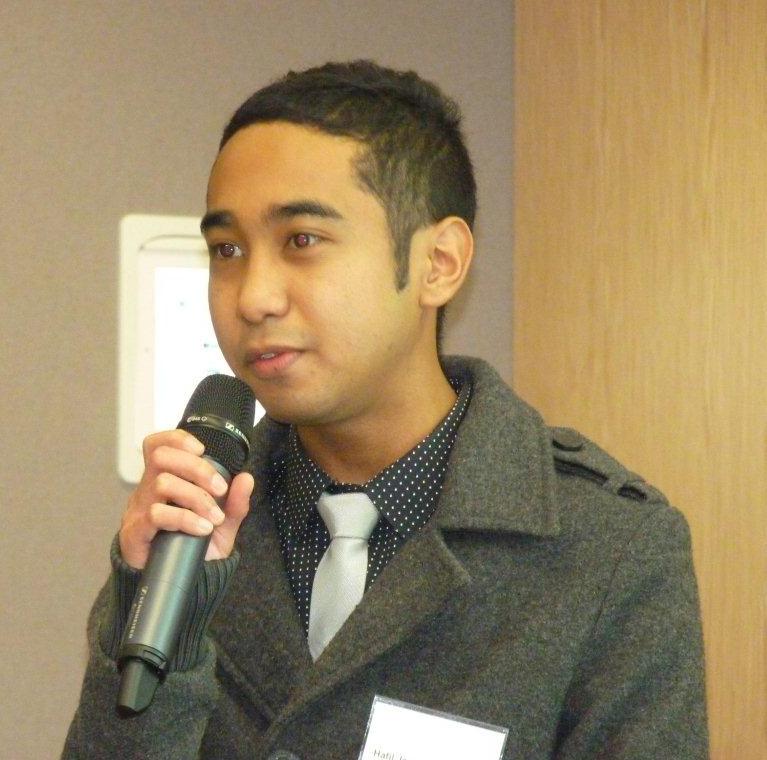
Anna Campbell's speech is below:  Hafil Santoro with Dr. Kohara, Philip Mitchell and Professor Chihiro Kinoshita Thompson, School of International Studies UNSW. Hafil Santoro with Dr. Kohara, Philip Mitchell and Professor Chihiro Kinoshita Thompson, School of International Studies UNSW.See more pictures from Events in 2012 and 2011.  |
“I think those press clubs are the hardening of the arteries of Japanese journalism. And that [the Fukushima nuclear meltdown] was a major heart attack for them,” he said.
“These things have worked for many years, but they only work when everything else is working.” This stream of misinformation not only affected where Fukushima locals evacuated to, but impeded then-Prime Minister Naoto Kan’s ability to make decisions on behalf of the nation. Two years on, towns north of Fukushima have started the long, heartbreaking process of rebuilding. But for many people who once lived near the reactor that may never be a possibility. Willacy admits his position as a journalist is a privileged one. Although spending weeks at a time in radiation hot-spots, the father of three can return to his family home at the end of a story. But for the reporter, who will be hanging up his Tokyo correspondent tabi at the end of the year, Japan is a place that has “intrigued me, delighted me and totally absorbed me.” “Japan will always be a part of me,” he says. Mark Willacy's book Fukushima: Japan's tsunami and the inside story of the nuclear meltdowns is out now and available at good bookstores including Kinokuniya.
Members with Mark and Suzie Willacy Nihongo de Shaberanaito! March 2013 Members of the AJS-NSW and affiliated organisations gathered, once more, for drinks, conversation, and Japanese food. This time, though - Japanese speaking only!  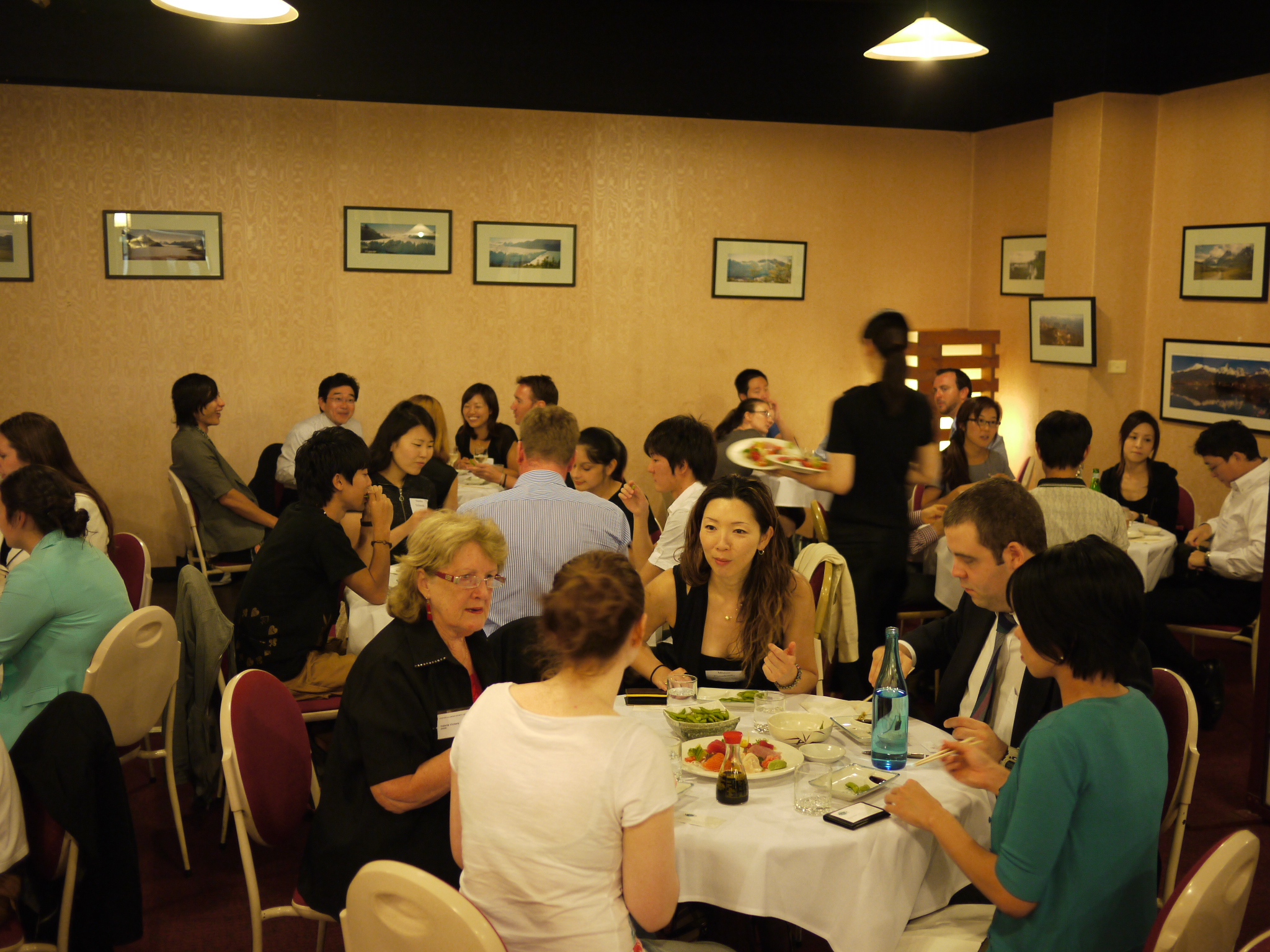 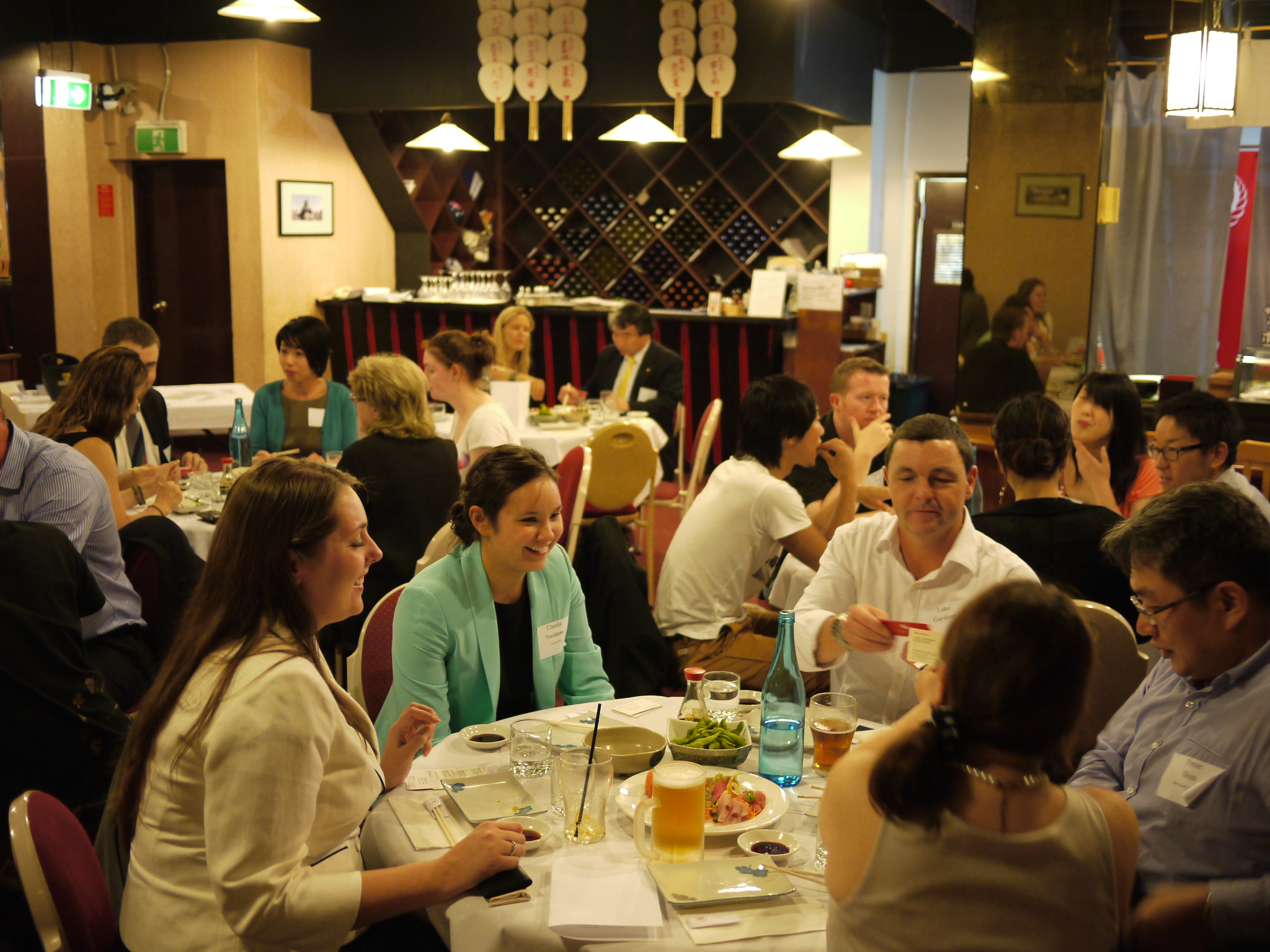  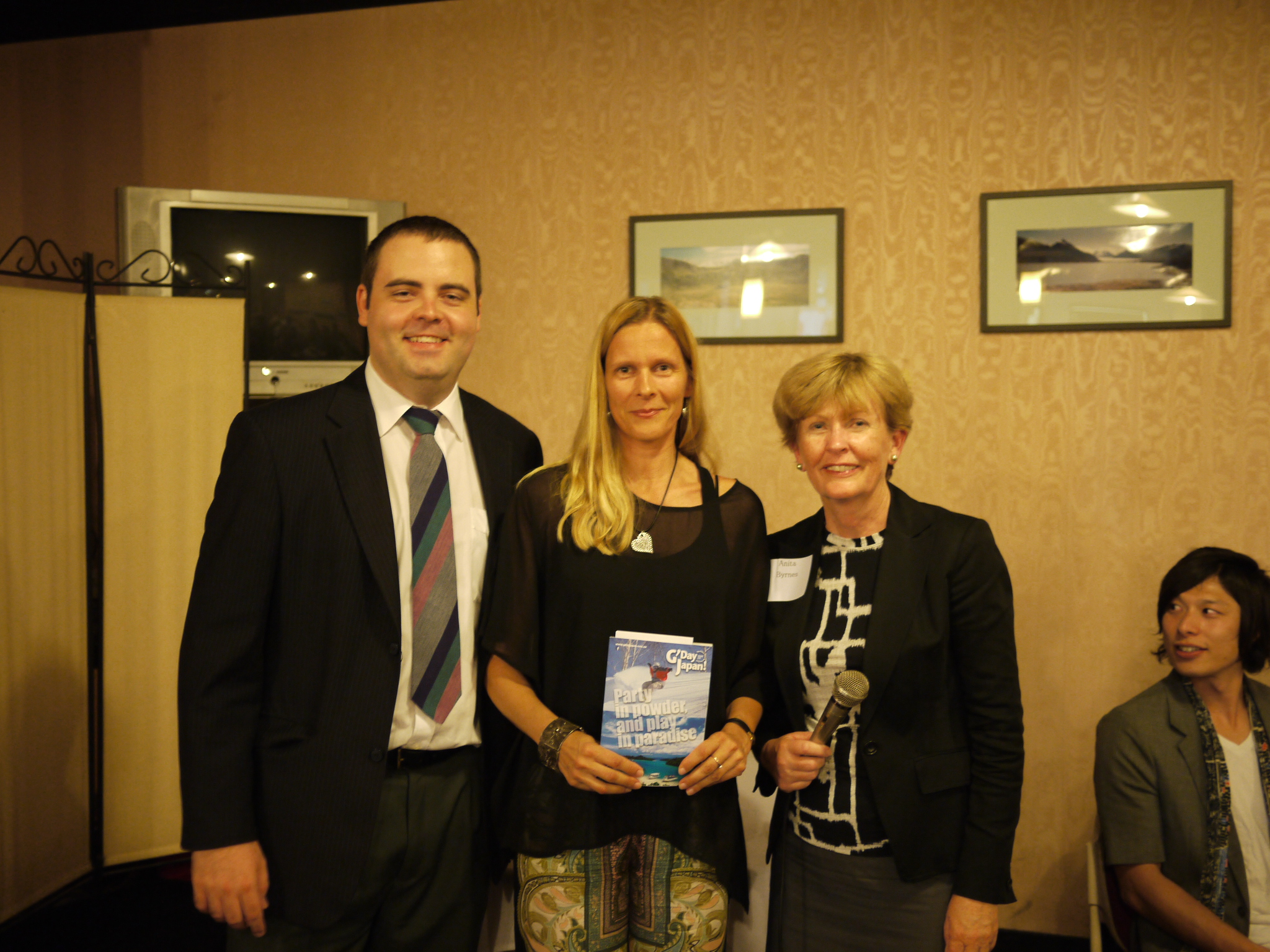 See these links from JAMsTV for interviews taken during the night: (thanks to the people at JAMsTV!) |

 The ABC’s North Asia correspondent spoke to the Australia Japan Society of NSW this month, recounting his weeks of reporting throughout Tohoku following the quake, and culminating in the journalist’s new book, Fukushima.
The ABC’s North Asia correspondent spoke to the Australia Japan Society of NSW this month, recounting his weeks of reporting throughout Tohoku following the quake, and culminating in the journalist’s new book, Fukushima.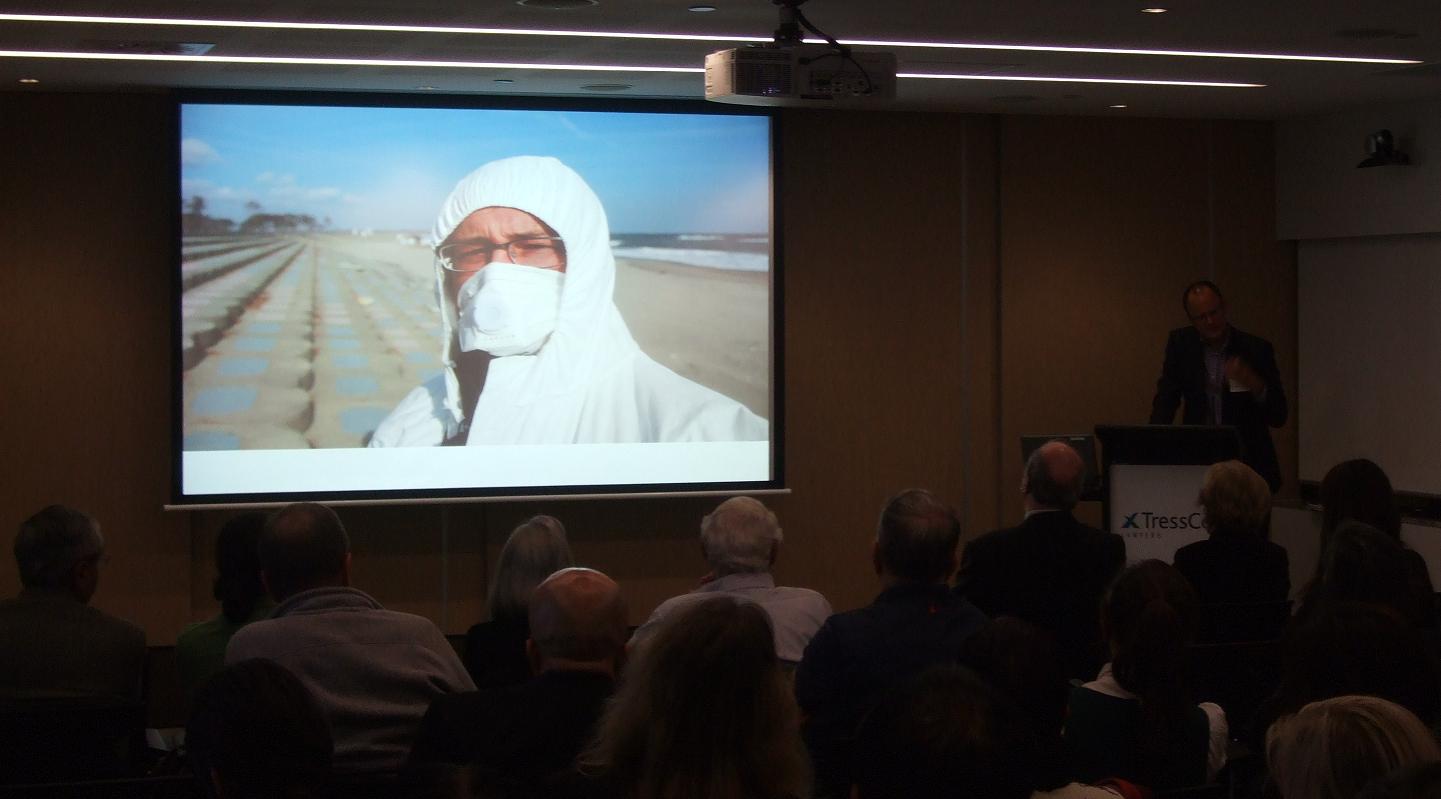
 acquarie University
acquarie University